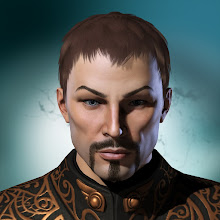But in the middle, he touches on much of the history behind
why he and the leaders of the CFC are so eager to smash the faces of N3. Essentially, Goonswarm has been fighting the
same enemies time and again. The corp
tickers change, but the characters themselves remain the same.
This gets me thinking about the nature of null-sec iterative
cycle. Goonswarm and allies fight BOB,
Goonswarm wins. BOB turns into someone
else who’s still butt-hurt about Goonswarm fighting them, and the cycle
repeats. Roughly the same enemies, roughly
the same sides, just different regions.
The only reason the fleet doctrines change is because of mechanics.
You’ll have this in any system in which characters are
immortal. It’s actually quite difficult
to lose skill points, save for insurance stupidity or T3 skill loss. Without death, pilots are able to continue to
charge into the fray. Your alliance goes
down? Form another to gain a few months’
lead-time, then get back to it. Unless
CCP gives capsuleers regeneration limits like Time Lords, we’ll never be short
of angry pilots for the front lines.
Now, it’s pretty clear that the reason for this is one of
propaganda. The CFC has every incentive
for reminding its members (or educating newer members) of the reasons why
they’re face-smashing their current enemy.
Tying it to previous conflicts and old grudges is certainly a way to
motivate the populace. So long as the
leadership of one side or the other insists upon evoking this history, it’ll
continue to build and the cycle will repeat.
So, the fact of and reasons for this cycle are clear, but
the question remains… is this good or bad for null-sec?
On the one side, the cyclical nature of this conflict
ensures a steady supply of content. Null-sec
is never without a major war for more than a couple months at a time. The prospect of blowing people up is what
draws people to null-sec in the first place, and the bloc wars offer a lot of
opportunity for that. It certainly isn’t
for everyone, but it provides an experience that can’t be replicated elsewhere. Null-sec players hunger for PvP content.
And the only thing better than content is viscerally
satisfying content. To fight someone is
good. To fight someone you hate is even
better; if you win, you’ve crushed an enemy, but if you lose, you build your
hunger for the next engagement.
But on the other side of the coin, the fact that the same
fights keep happening again and again makes it very difficult for new factions
to enter the fray. Only by teaming up
with one of the two sides of the eternal war can it really happen, and if they
do that, they inherit a whole set of enemies along with their new allies, which
a lot of alliances are hesitant to do.
The endless war iteration also contributes to the apparent
stagnation of null-sec. While regions
are, in fact, switching hands left and right, the feeling among the player base
is that nothing changes, since the same players are always involved.
Then there’s the big blue doughnut. While it certainly wasn’t true earlier, it’s
pretty clear that a story is being built about an inexorable slow grind to
complete CFC null-sec domination. They
suffer their share of setbacks, but the CFC has only gained regions over the
past two years. Granted, it’s happened
through tenacity more than skill (I absolutely believe every null bloc has
pretty much the same skill at this game, it’s only organization and leadership
that varies).
And that’s a problem.
When you face an endless cycle of war between the same two power blocs,
the bloc that loses the first war is in a weaker position for the second
one. The mechanics makes it very
difficult for the initial loser to recover his footing.
So, which wins out?
The constant supply of content or the contribution to the status quo of
CFC dominance? Positive or negative? I’m not sure, and I can’t say whether a
continuation of the eternal iteration is a good thing or a bad thing for
null-sec. Only time will tell.

No comments:
Post a Comment